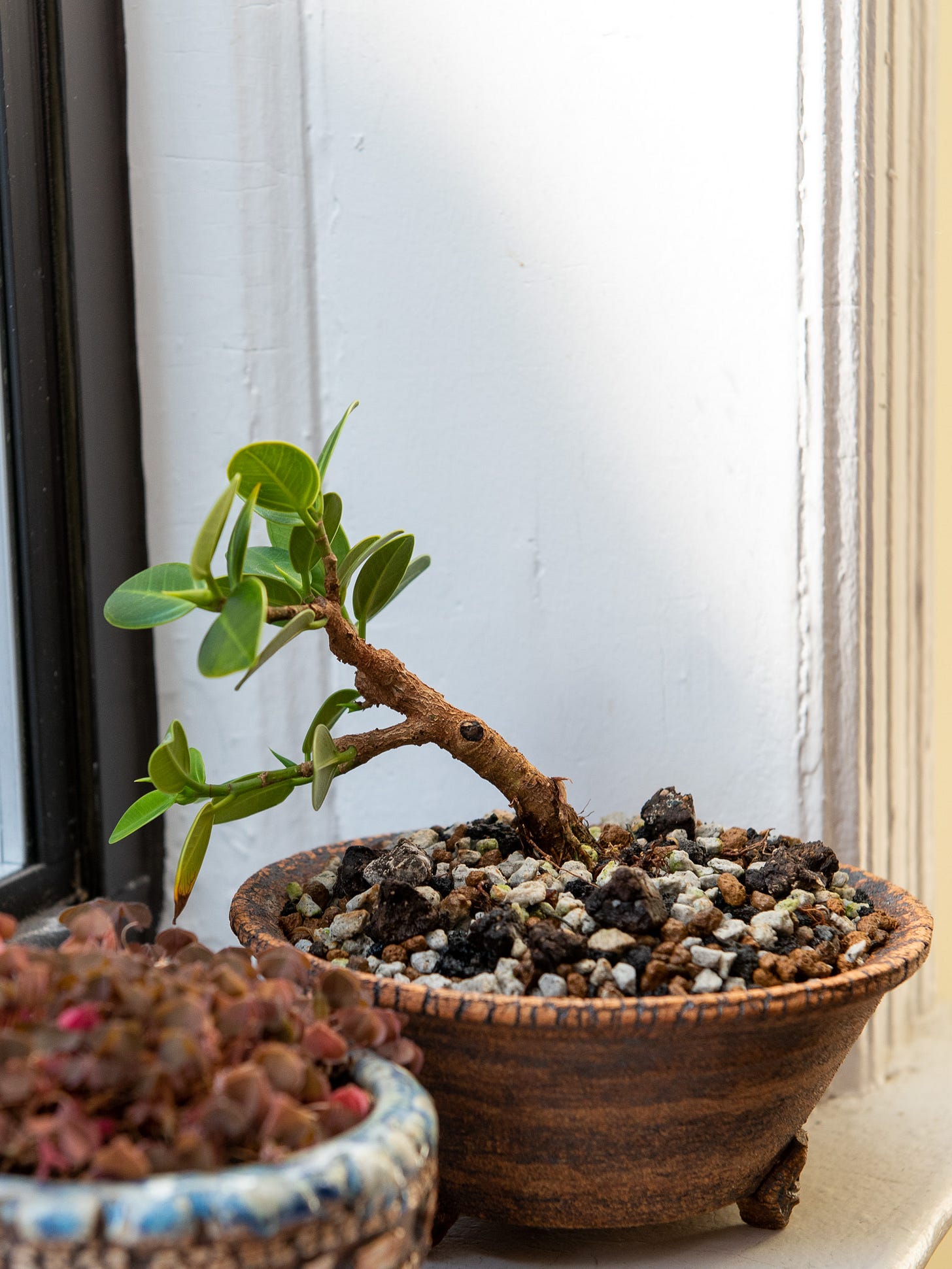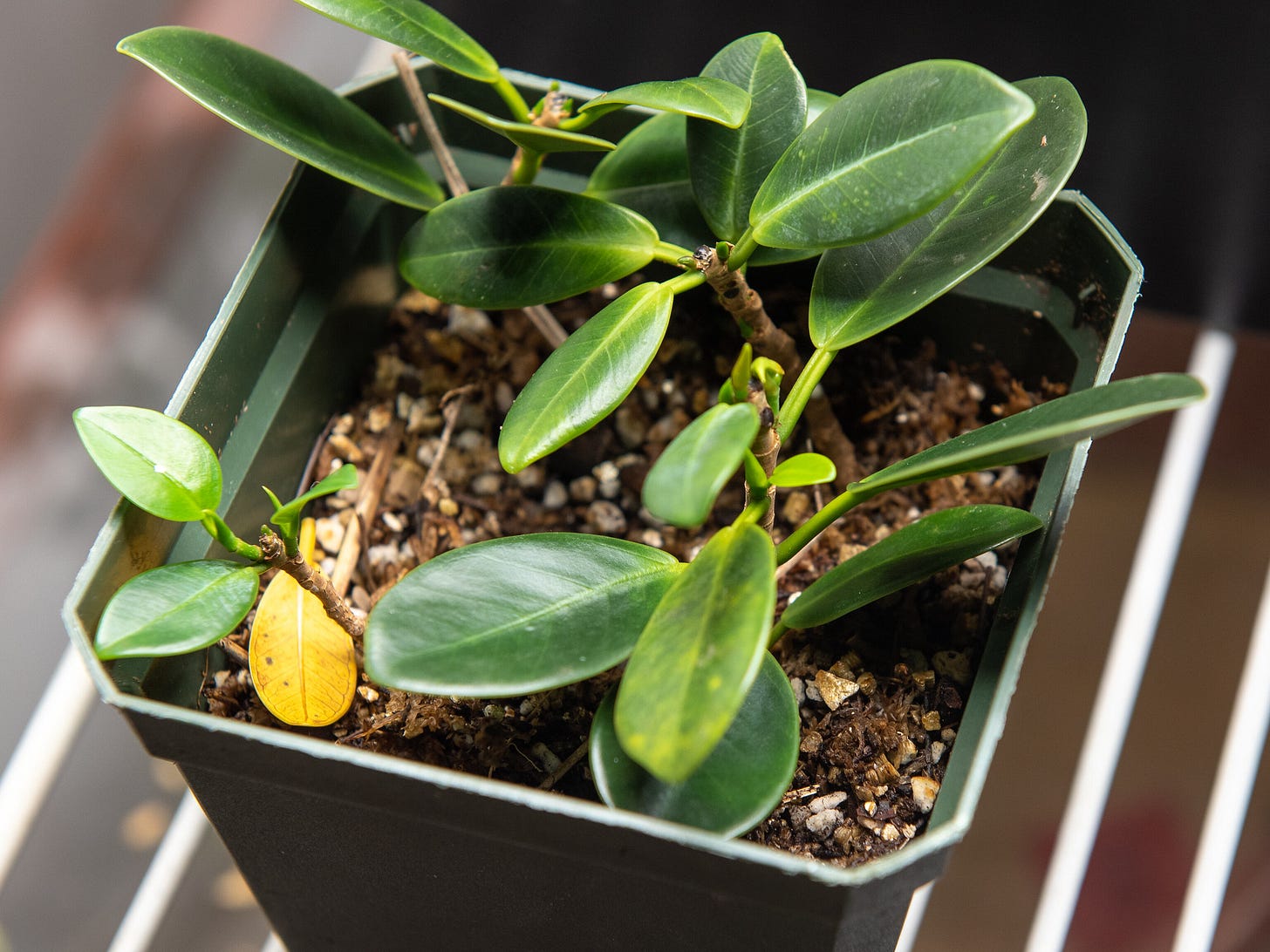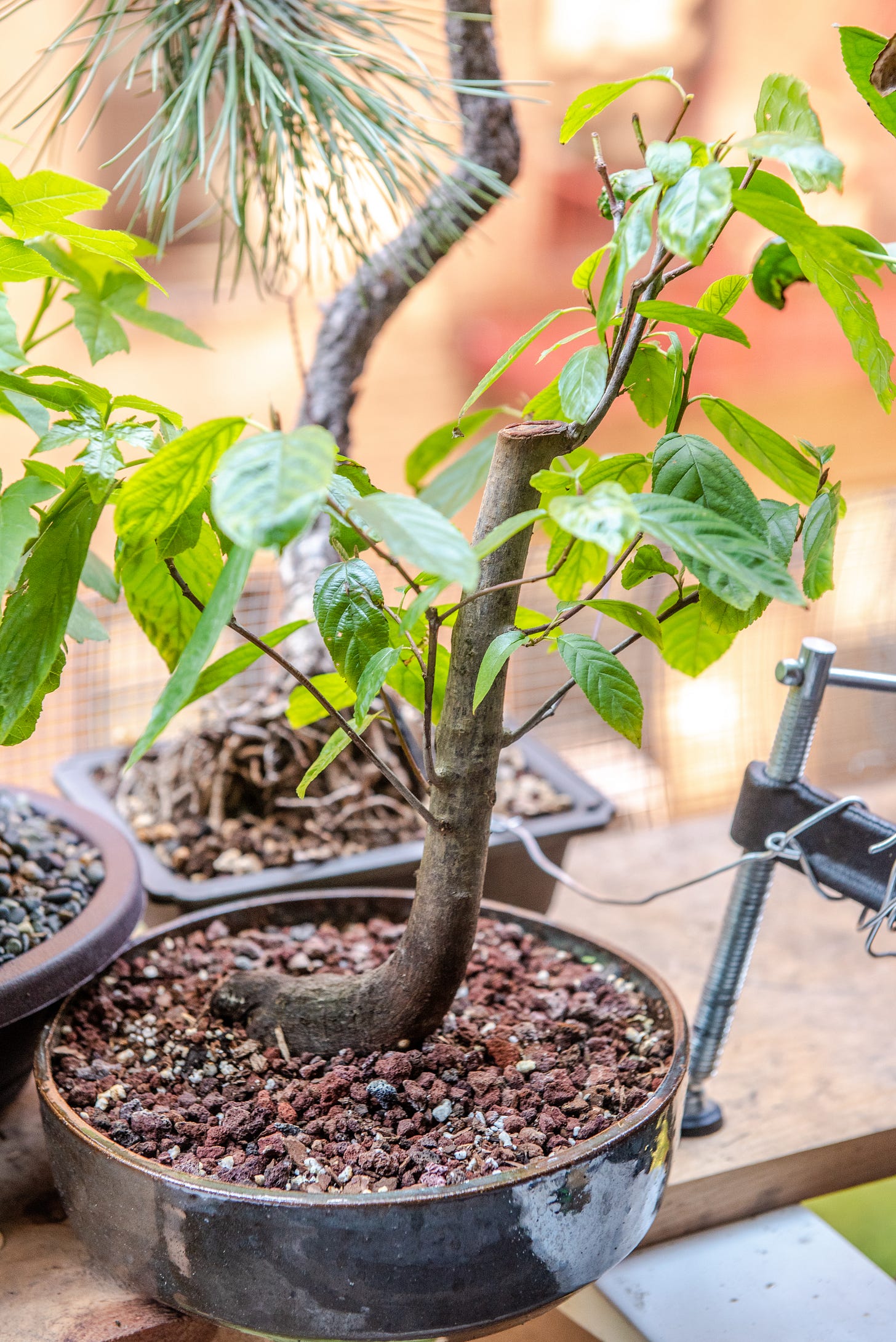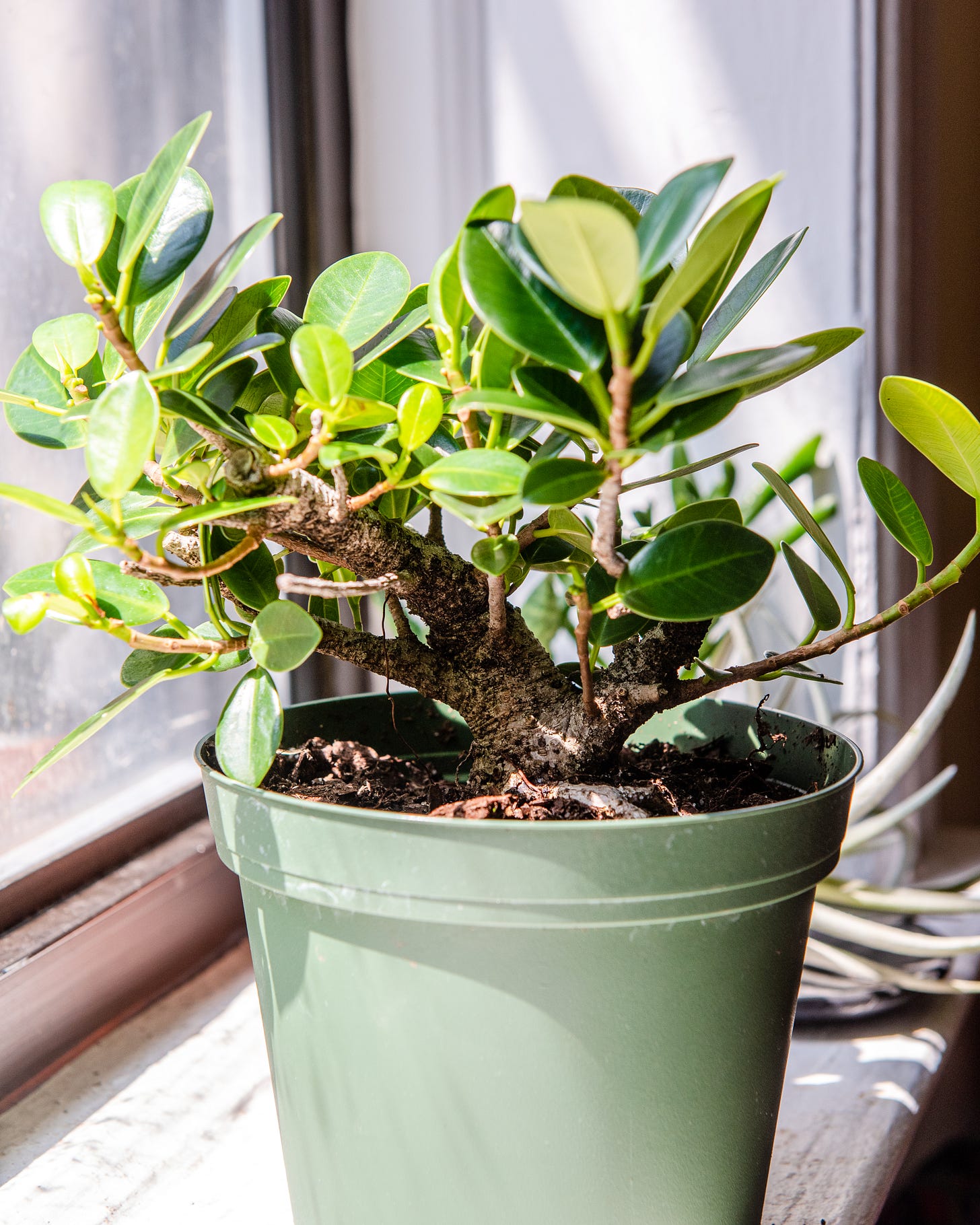Calling all pot heads
I regret to inform you I’ve gotten into bonsai pots.
There’s a whole aspect of bonsai that I’ve ignored for two years: the pots my trees are planted in.
Bonsai pots are wide and shallow to create the forced perspective of a landscape for a tree. Their small volumes maintain a tree’s miniature proportions. For this reason a bonsai may take decades of training in deeper containers before it’s planted in a bonsai pot. None of my trees are that far along.
As such I’ve kept to plastic nursery and terra cotta pots. My outdoor trees are dug into a garden planter attached to a restaurant, so there’s no reason to use a nice or shallow pot. My growing indoor garden, however, offers more opportunities.
After months of hiding in shame, I must come clean. I am now buying bonsai pottery.
Both of these pots are from Chingwen Chen, a potter who frequents the bonsai auction pages I watch. When I saw each of these I knew I had to jump. I enjoy scruffy crackly textures in ceramics, especially when paired with graceful shapes and details.
The pot on the left contains wood sorrel, a weed that arrived with an old tree purchase and that I’ve been growing into an accent plant. The righthand tree is a year-old ficus cutting. It’s destined for a group planting but needs more time growing out in a pot on its own. Here’s how it looked in January.
I plan to use these pots for my two pomegranate trees come spring. Until then it’s nice to see them in use, and to get a feel for handling them. The ficus is way too small for a pot of this size, but that’s just what I need to help it bulk up through winter.
There are whole fields of bonsai aesthetics about pairing trees and pots. Pots enhance and harmonize the feeling of a tree. For a rugged, muscular conifer that usually means a heavy straight-sided pot. For a graceful Japanese maple, maybe an oval with a glaze that complements the fall foliage. Here’s a nice look from the superlative Bonsai Tonight on matching such a maple with eight possible pots. “The biggest difference in feeling resulted from the container dimensions and the shape of the pot lip,” Jonas Dupuich writes.
A pot lip! A lip I didn’t even notice as I scrolled through the photos! This is the attention to detail that entices and infuriates me. So much of it seems arbitrary. I know this is because I have more reading to do. But it’s also about getting hands-on experience, which by its nature can’t be rushed no matter how much I study. That’s what I’m trying to do now, trust my instincts and blunder forward and see how a pot lip changes the feeling of a couple trees.
Squirrels executed this viburnum, but I still have the pot. It has a lustrous blue glaze with tinges of rust that I think will go nicely with my water jasmine.
I think the blue will suggest a graceful aquatic vibe against the tree’s silver-grey bark, and the darkness of the glaze will help the tree’s white flowers stand out.
Some day. This tree needs more time in a deep training pot.
Here is the first indoor tree I purchased in August 2021. Today it looks like this.
The pot—another Chingwen Chen creation—is also too big for the tree at present. If we go by traditional bonsai proportions, the pot for this tree should be one half or a third as high with a tighter circumference. The main branches should just extend beyond the pot’s rim to set the scene. I wouldn’t say the pot and tree are a great aesthetic match. Both are too loud for each other.
As with the smaller fig, this one still has more growing to do, so the larger size of this pot is ideal. I took its arrival as an opportunity to transition the tree to a purely inorganic bonsai soil. The tree will spend next year growing wild in this pot. By 2024 it may be ready for a more appropriately sized pot.
Until then I have time to handle this tree and study it from all sides. And window shop for other pots, of course.
Tree reading
From 2008 but new to this bonsai blogger: Artist Tim Knowles attaches pens to tree branches, which doodle on paper as they sway in the breeze. [Inhabitat]
More recently: turning a bellowing tree into a seasonal artwork. [Design Boom]







